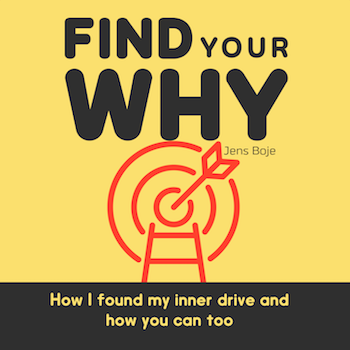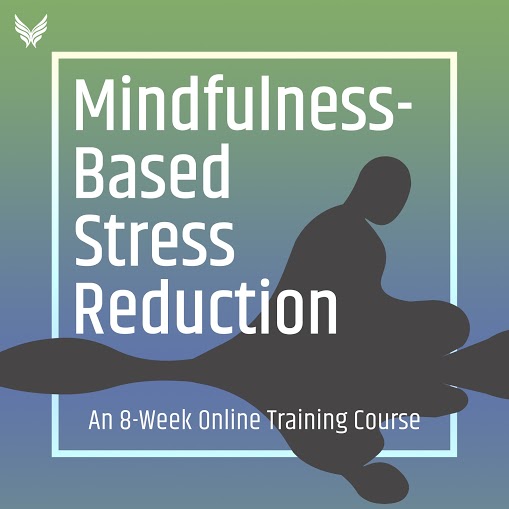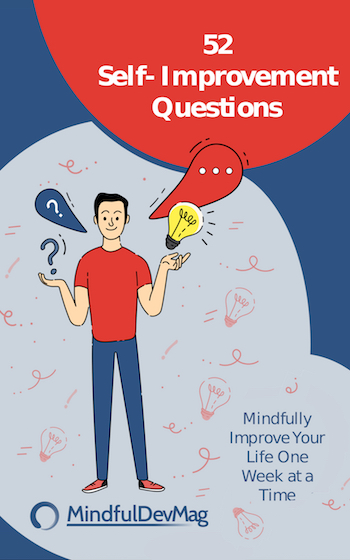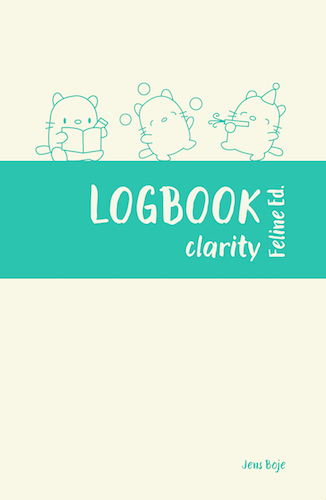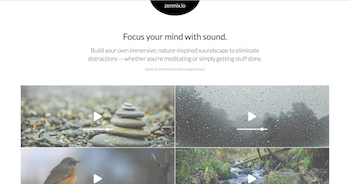What are the 7 Types of Hunger in Mindfulness and Buddhism?
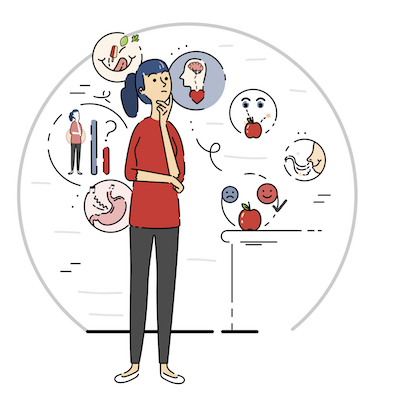
Many people acknowledge that there are different motivations for eating, such as boredom, emotional relief, and genuine hunger. However, did you know that mindfulness identifies seven distinct types of hunger? Mindful eating is a common introduction to the topic of mindfulness as a whole, so let’s take a look at these ideas, and why they may be worth incorporating into your life.
Mindfulness is known as a method for bringing more joy into your life, gaining control over your behaviors and actions, and relieving anxiety among other selling points. It is natural for this type of language to trigger a bit of skepticism. However, the core purpose of mindfulness is quite simple, and researchers have proven its effectiveness.
Mindfulness is the act of cultivating awareness around your thoughts and guiding your mind back to the present in a nonjudgmental way. It is known for having roots in Buddhism, though now it is commonly taught as a secular practice as well.
Bringing your mind into the present can strengthen areas of the brain associated with cognition, attention, and emotional regulation. It can also help direct you away from stress and toward relaxation by triggering your body’s relaxation response. Focusing on the senses is a great way to hone in on mindfulness, hence the growing popularity of mindful eating.
Mindful eating is using your senses to gain more awareness surrounding the act of eating, and the emotions, feelings, and intentions behind what, when, and why we eat. Understanding the seven types of hunger in mindfulness can help build this awareness, create a healthier relationship with food, and ensure that you are eating for the right reasons. So let’s get right to it, what are the seven types of hunger in mindfulness?
The seven types of hunger in mindfulness are stomach, mouth, eye, nose, cellular, mind, and heart hunger. Below we’ll run through an explanation of each type of hunger, and learn how to determine which one you are experiencing. Once you’ve developed this awareness, you’ll have a deeper understanding of your motivators surrounding eating, and likely get more enjoyment out of this necessary biological function.
1. Stomach hunger
Stomach hunger may be the type that comes to mind when you think about feeling hungry. A rumbling stomach is one of the most common signs that your body is low on fuel. Surprisingly though, stomach hunger can be an unreliable indicator of hunger in certain situations. If you are used to eating at certain times, your stomach might rumble out of habit. Other factors can send false signs of stomach hunger, such as anxiety and hormones.
How to determine: If your stomach rumbles, tightens, feels empty, or makes noises, you are likely experiencing stomach hunger. Any sensation in your stomach area that you associate with hunger might be your body’s expression of stomach hunger. It is possible to experience an absence of stomach hunger symptoms as well.
How to respond: If you’re experiencing a sensation that you attribute to stomach hunger, notice the sensation from a place of curiosity. Are you hungry because you always eat at this time? What is the best way to make your stomach feel good again? Eating healthy foods in quantities that feel good in your body can help you arrive at a good place between empty and uncomfortably full.
2. Mouth hunger
Mouth hunger is a craving that lives in the mouth, as opposed to the stomach. Your taste preferences, or the desire to eat something based on taste rather than hunger pangs, are your body’s ways of expressing mouth hunger. You may prefer certain flavors and textures over others, and your desire to experience these sensations may not always be met in a mindful way. If you crave chocolate but consume it mindlessly while focusing on another activity, your mouth hunger may not be fully satisfied.
How to determine: More often than not, the cravings you have for certain foods are a symptom of mouth hunger. Your desire to taste a certain flavor, indulge in a certain snack, or experience a specific texture or sensation in the mouth are all indicators that you are experiencing mouth hunger.
How to respond: Mouth hunger can often lead to mindless eating in order to satisfy a craving. Instead of meeting mouth hunger with distracted consumption, try fully focusing on the food or drink that you desire. When you fully focus on the flavors, textures, and sensations involved, you may find that you can satisfy your mouth hunger by consuming much less of the item than you initially would have.
3. Eye Hunger
Eye hunger is the feeling you get when you see a delicious food and decide you want to eat it based on that visual stimulation. You may decide to put a certain amount of food on your plate based on how it looks visually. Sometimes when we determine what to eat based on how it looks to us, we may eat more or less than our bodies actually need, so it is not always the best indicator of how we should be eating.
How to determine: If you decide to eat something, or prepare a specific meal based on how it looks, you are experiencing eye hunger. You may also experience eye hunger if you eat something just because it is visibly present, such as food still remaining on your plate, a few chips left in a bag, or anything you see in front of you but may not necessarily be experiencing mouth or stomach hunger for.
How to respond: If you experience eye hunger, ask yourself if you truly want or need the food or drink you desire. Make a conscious decision not based on availability, but on what feels best for your body. You can meet any eye hunger needs in a more conscious way by paying more attention to the presentation of a meal. Presenting your food in more visually appealing ways brings awareness to eye hunger temptation, so you can consciously choose whether it would feel best to indulge the feeling or not.
4. Nose Hunger
Nose hunger is intertwined with mouth hunger, as much of what we taste has to do with our sense of smell. Think about it, if your nose is blocked, your food doesn’t taste the same, or you may not be able to taste it at all. Smelling good food can be a trigger for hunger, and you may decide to eat something solely based on how the smell made you feel. Our noses may tempt us to eat when we did not previously need or want to, so it’s a good idea to check in and make sure you’re eating for the right reasons.
How to determine: If you suddenly crave a food after smelling it, you may be experiencing nose hunger. For example, does the smell of fresh-baked waffles make you crave them, even if you’re not very hungry? Noticing a delicious scent can trigger impulsive eating decisions, so it’s good to apply an air of mindfulness before acting on a feeling of nose hunger.
How to respond: If you experience nose hunger, there’s a chance that simply smelling a nice scent can satisfy this feeling. Paying attention to your sense of smell and noticing how the scent makes you feel can help you determine if you’d like to eat, or if merely smelling the delicious aroma is enough. Incorporating pleasing scents into your life can remedy nose hunger if you notice that it has a strong effect on you.
5. Cellular Hunger
Cellular hunger is the type of nourishment your body needs at the cellular level. This is similar to the idea of intuitive eating or eating based on how your body feels versus following some type of diet. Sometimes it can be difficult to sense cellular hunger, but extreme cases can be useful for understanding this concept. If you are dehydrated, the craving for water is undeniable. Your tongue is dry; you may get a headache, feel drained, or even dizzy. This same idea applies to the specific nutrients your body needs.
How to determine: Understandably, this type of hunger may be more difficult to determine. If you get a craving, or a symptom in your body could be remedied by eating or drinking something specific, you may be experiencing cellular hunger. The cells of your body may be trying to tell you that they need something specific in order to function at their best. Learning the signals can help you work with your body to give it the nutrition it needs.
How to respond: If you feel a craving that is not coming from your stomach or any particular sense, dig deeper into what the craving is. Do you need something to drink? Are you hungry for something acidic, fatty, or full of protein? Maybe you’re craving salt or a specific herb? Ask yourself these questions to get to the root of what your body may need in a given moment.
6. Mind Hunger
Mind hunger is related to the thoughts you have about food. If you are stressed, you may decide you deserve your favorite treat. If you ate ‘unhealthily’ one day, your mind might tell you that you need to eat some vegetables. If you let your mind decide what you eat, you may be operating out of anxiety or worry. It’s good to acknowledge when mind hunger is overriding what your body wants and needs. This way, you can use your mind as a tool to treat your body well, rather than punishing, shaming, or worrying yourself about food.
How to determine: If you decide what to eat based on negative thoughts about your body or eating habits, something you read or saw on television, or something you learned about in a blog or dietary guide, you may be experiencing mind hunger. Your mind may trick you into thinking that it knows best, but sometimes it’s worth checking in with your body to make sure you are operating in its best interest.
How to respond: If you are experiencing mind hunger, try to get to the root of the thought. Are you telling yourself to stay away from something because you heard it was bad, or because you know it doesn’t feel good in your body? Are you eating a specific food because you heard it was good for you, or because it actually makes you feel nourished and satisfied? Asking questions like these can help you determine whether or not your mind is operating in your best interest.
7. Heart Hunger
Heart hunger is the type of hunger related to what you may know as ‘emotional eating.’ Eating after or during experiencing negative emotions is a way we experience heart hunger. Another expression of the type of hunger is craving or consuming certain foods or drinks because they remind us of pleasant memories. Eating food from childhood because it makes you feel happy or nostalgic may be an act of heart hunger.
How to determine: If you crave your mother’s cooking, a snack you always had with an old friend, or a drink you always ordered from a certain restaurant, you may be experiencing heart hunger. If you crave a food or drink as a reaction to negative emotions, you may also be experiencing heart hunger.
How to respond: First, ask yourself if your body is hungry at this moment. If the answer is no, you may want to do some deeper reflection. Ask yourself what emotion, memory, or feeling is making you crave a certain food or drink. Is there a way you could meet this need by connecting with the person you are thinking of, expressing the emotion you feel in a healthy way, or engaging in a creative or physical activity?
How to avoid eating when the “wrong” hunger is present
Here are a few tips to avoid indulging the “wrong” type of hunger:
- Reflect on what type of hunger you may be experiencing at this moment.
- Identify the type of hunger and mentally label it.
- Decide if indulging this type of hunger would feel good in your body.
- Decide if eating, as a response to this type of hunger, would be healthy mentally, physically, and emotionally.
- Ask yourself if the hunger you are feeling is rooted in judging, shaming, punishing, or trying to control yourself in an unkind way.
- If you have identified the hunger as a negative response, ask yourself if there is a more positive, healthy, and productive activity you could engage in instead.
Cultivating awareness surrounding your hunger and how it manifests will help you make healthy decisions as a response. You can decide how best to treat your body in the given situation, and if the need you feel could be met in a way other than eating or drinking.
Moving from mindless to mindful eating can help you develop mindfulness in other areas of your life. You can learn when you are impulsively reacting from a place of stress, emotion, negativity, or anxiety, and start to shift those behaviors toward healthier, conscious, and more relaxed responses.
[bmw]
References:
- https://www.umsystem.edu/newscentral/mindfuleating/2012/05/14/the-seven-hungers/
- https://rootandbranch.cc/seven-types-of-hunger/
- https://www.nature.com/articles/nrn3916
- https://www.canr.msu.edu/news/seven_hungers

